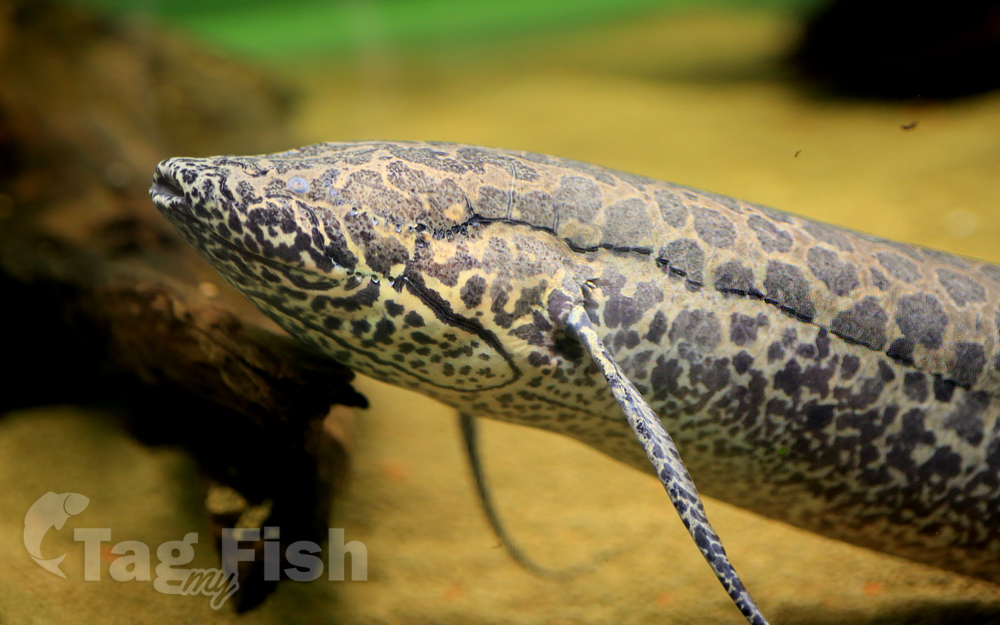Marbled lungfish
(Protopterus aethiopicus)

Classification
General data
The marbled lungfish (Protopterus aethiopicus) is a lungfish of the family Protopteridae. Also known as the leopard lungfish, it is found in Eastern and Central Africa, as well as the Nile region. At 133 billion base pairs, it has the largest known genome of any vertebrate and one of the largest of any organism, along with Polychaos dubium and Paris japonica at 670 billion and 150 billion, respectively.
The marbled lungfish is caught in large numbers throughout much of its range, including several hundred metric tonnes per year in the Mwanza Gulf of Lake Victoria alone. It is mostly a food fish, although this varies depending on the exact community, with some recognizing it as a delicacy and others strongly disliking its taste or considering it as a taboo to eat it. In some regions, parts of this fish are used as traditional medicine.
Description
The marbled lungfish is smooth, elongated, and cylindrical with deeply embedded scales. The tail is very long and has tapers at the end. They can reach a length of up to 2 m (6.6 ft).
The pectoral and pelvic fins are also very long and thin, almost spaghetti-like, used for gliding through the water.
The newly hatched young have branched external gills much like those of newts. After two to three months, the young metamorphose into the adult form, losing their external gills for gill openings.
These fish have a yellowish gray or pinkish-toned ground color with dark slate-gray splotches, creating a marbling or leopard effect over their bodies and fins. The color pattern is darker along the top and lighter below.
It was once believed that marbled lungfish are obligate air breathers, however, research published in 2007 suggests that the marbled lungfish primarily relies on aquatic respiration unless restricted by certain ecological or physiological conditions.
Distribution
Protopterus aethiopicus is found in the African countries of Angola, Burundi, Egypt, Ethiopia, the Democratic Republic of Congo, Kenya, Republic of the Congo, Rwanda, South Sudan, Sudan, Tanzania, Uganda and Zambia. Among others, it lives in the Nile and Congo River basins, including lakes such as Albert, Edward, Tanganyika, Victoria, Nabugabo, Turkana, No and Kyoga.
Different subspecies are found in different areas: P. a. aethiopicus lives in the Nile basin and its lakes like Victoria and Tanganyika, P. a. congicus in the middle and upper Congo River, and P. a. mesmaekersi in the lower Congo.
Habitat
Adult marbled lungfish live in swamps, riverbeds, floodplains, and river deltas throughout its range. The juvenile members of the species often live in between the roots of papyrus plants. Despite being aquatic, adult marbled lungfish can live in riverbeds and other areas that have no rain for portions of the year due to their ability to estivate or burrow in the ground to form an air bubble and breathe out of a hole in the cocoon thus formed.











